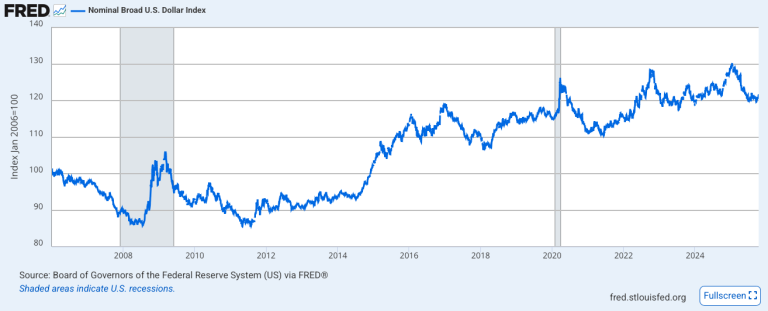AI for Industry Analysis: Using Gemini 2.5 Pro & ChatGPT in Finance
In today’s fast-paced financial world, staying ahead requires deep, timely, and accurate industry insights. However, traditional industry analysis methods are often laborious, involving sifting through mountains of reports, news articles, and data streams. This process is not only time-consuming but also prone to overlooking subtle trends hidden within the noise.
Enter Artificial Intelligence (AI). Advanced AI tools, particularly large language models (LLMs) like Google’s Gemini 2.5 Pro and OpenAI’s ChatGPT, are rapidly transforming how financial professionals approach market research and analysis. These tools offer powerful capabilities to process vast amounts of information, identify patterns, and generate insights at unprecedented speed. While this article explores how finance users can effectively leverage Gemini 2.5 Pro and ChatGPT to streamline industry analysis, similar AI tools can also assist individual retail investors, as discussed in How To Use LLMs Like Gemini & ChatGPT for Stock Research.
Understanding the AI Tools: Gemini 2.5 Pro and ChatGPT
Before diving into applications, let’s briefly understand two of the main AI LLM providers:
- Gemini 2.5 Pro: Google’s advanced multimodal model, known for its sophisticated reasoning capabilities, ability to process and understand vast amounts of text, code, images, and potentially even audio/video data within a large context window. This makes it adept at synthesizing information from diverse, lengthy sources and handling complex analytical queries.
- ChatGPT (GPT-4 and beyond): Developed by OpenAI, ChatGPT excels at natural language generation, conversation, summarization, and structuring information. It’s highly effective for brainstorming, drafting reports, answering specific questions, and reformatting information based on user needs.
Both tools leverage deep learning to understand and generate human-like text, analyze data patterns, and perform tasks that traditionally required significant human effort.
Specific Use Cases for AI in Industry Analysis
AI models like Gemini 2.5 Pro and ChatGPT can be applied across various facets of industry analysis:
1. Market Sizing & Growth Projections
- Challenge: Estimating market size and forecasting growth often requires consolidating data from multiple, sometimes conflicting, market research reports.
- AI Solution: Feed relevant reports, financial statements, and economic data to the AI. Ask it to synthesize the findings, identify consensus estimates, highlight discrepancies, and even extrapolate potential growth trajectories based on stated assumptions. Gemini 2.5 Pro’s ability to handle large documents can be particularly useful here.
- Example Prompts:
- (Gemini) “Analyze the attached market research reports [Report A PDF, Report B URL] on the global electric vehicle market. Summarize the key market size estimates for 2024, projected CAGR for the next 5 years, and list the core growth drivers identified in both reports.”
- (ChatGPT) “Based on data showing a 15% YoY growth in cloud computing spend for the last 3 years, and analyst projections of 12% for next year, draft a paragraph outlining the potential market size in 5 years, assuming a gradually decelerating growth rate.”
2. Competitive Landscape Analysis
- Challenge: Identifying all relevant competitors and understanding their strategies, strengths, and weaknesses requires scouring websites, press releases, earnings call transcripts, and news articles.
- AI Solution: Use AI to quickly scan and summarize competitor materials. Ask it to identify key strategic initiatives, product launches, management commentary on market position, and reported strengths or challenges.
- Example Prompts:
- (ChatGPT) “Identify the top 5 competitors for Company X in the cybersecurity software industry based on recent news articles and their websites [provide URLs]. For each, list their primary product focus and recent strategic announcements.”
- (Gemini) “Analyze the Q4 2024 earnings call transcript for Competitor Y [attach transcript]. Summarize their stated strategic priorities for 2025 and any commentary regarding competitive pressures or market share.”
3. Trend Identification & Disruption Monitoring
- Challenge: Spotting emerging trends, technological advancements, or potential disruptions requires monitoring a vast, unstructured landscape of news, social media, academic papers, and patent filings.
- AI Solution: AI can process these diverse sources at scale, identifying recurring themes, sentiment shifts, and newly patented technologies that could signal industry shifts.
- Example Prompts:
- (Gemini) “Scan recent technology news outlets, research paper abstracts [provide search terms or database access if possible], and patent databases for mentions of ‘solid-state battery technology’. Summarize the key advancements and potential implications for the automotive industry.”
- (ChatGPT) “Brainstorm potential disruptive trends for the traditional retail banking sector based on advancements in fintech, blockchain, and changing consumer preferences.”
4. Regulatory & Risk Analysis
- Challenge: Understanding complex regulatory frameworks and identifying potential risks involves reading dense legal and policy documents.
- AI Solution: Use AI to summarize lengthy regulatory documents, extract key compliance requirements, or scan news and reports for mentions of industry-specific risks (e.g., supply chain vulnerabilities, geopolitical factors, ESG concerns).
- Example Prompts:
- (Gemini) “Summarize the key requirements for financial institutions outlined in the attached regulatory document [attach PDF] regarding climate risk disclosure.”
- (ChatGPT) “Identify the main risks discussed in recent analyst reports concerning the semiconductor industry.”
5. Assisting SWOT Analysis
- Challenge: Gathering comprehensive information for a SWOT (Strengths, Weaknesses, Opportunities, Threats) analysis can be time-consuming.
- AI Solution: While AI shouldn’t perform the strategic thinking, it can rapidly gather the raw information. Ask it to list reported strengths of key players, common industry weaknesses cited in reports, potential opportunities based on emerging trends, and threats identified through risk analysis.
- Example Prompts:
- (ChatGPT) “Based on recent financial news and analyst reports for the renewable energy sector, list potential ‘Opportunities’ and ‘Threats’ commonly cited for companies in this industry.”
- (Gemini) “Analyze Company Z’s last two annual reports [attach files]. Extract statements that highlight their operational strengths and any acknowledged weaknesses or challenges.”
6. Customer Sentiment Analysis (Brief Mention)
- Challenge: Gauging public perception requires analyzing reviews, social media, and forums.
- AI Solution: AI tools can analyze large volumes of text data to assess overall sentiment (positive, negative, neutral) towards an industry or specific companies, identifying key themes in customer feedback. (Note: This often requires specialized sentiment analysis tools, but LLMs can provide a preliminary overview).
Leveraging Gemini 2.5 Pro vs. ChatGPT
While both tools are powerful, they have nuances:
- Gemini 2.5 Pro Strengths:
- Large Data & Multimodality: Ideal for analyzing lengthy reports, multiple documents simultaneously, or potentially extracting insights from charts and tables within PDFs (depending on specific capabilities).
- Complex Reasoning: Better suited for queries requiring deeper analysis, synthesis across diverse sources, and understanding nuanced relationships within the data.
- Accuracy in Summarization: Excels at creating concise, accurate summaries of complex information.
- ChatGPT Strengths:
- Structured Output & Generation: Excellent for drafting sections of reports, generating lists, creating tables, and formatting information clearly.
- Brainstorming & Ideation: Useful for exploring different analytical angles or generating initial hypotheses.
- Conversational Q&A: Effective for quick, specific questions about industry players or concepts.
Often, the best approach involves using them together. For instance, use Gemini to analyze and summarize raw data from long reports, then use ChatGPT to structure those findings into a specific report format or brainstorm follow-up questions.
Benefits & Advantages of Using AI
Integrating these AI tools into your workflow offers significant advantages:
- Speed & Efficiency: Drastically reduces time spent on data gathering and initial analysis.
- Deeper Insights: Uncovers patterns and correlations across vast datasets that might be missed by human analysts.
- Broader Coverage: Allows analysis of a wider range of sources (news, social media, academic papers) than typically feasible manually.
- Democratization: Provides access to sophisticated analysis capabilities previously requiring specialized teams or expensive software.
Limitations & Critical Considerations
Despite their power, AI tools are not infallible. Crucial considerations include:
- Accuracy & Hallucinations: AI models can sometimes generate incorrect or nonsensical information (“hallucinate”). All outputs must be critically reviewed and fact-checked against reliable sources.
- Data Bias: AI models learn from vast datasets, which may contain inherent biases. These biases can skew analysis if not recognized and accounted for.
- Need for Human Oversight: AI is an assistant, not a replacement for human expertise, critical thinking, and domain knowledge. Financial professionals must guide the AI, interpret the results, and apply strategic judgment.
- Data Privacy & Confidentiality: Be extremely cautious about inputting sensitive or proprietary information into public AI models. Understand the data usage policies of the tools you use.
- Source Reliability: AI summarizes information but doesn’t inherently verify the credibility of the original sources. Validate the underlying data.
Conclusion: The Future is Collaborative
AI tools like Gemini 2.5 Pro and ChatGPT represent a paradigm shift in financial industry analysis. They empower professionals to work faster, smarter, and derive deeper insights from the ever-increasing deluge of data. By understanding their capabilities and limitations, finance professionals can effectively integrate these tools to enhance market research, competitive analysis, and trend spotting.
The key lies in a collaborative approach: leveraging AI for its speed and data processing power while applying human expertise for validation, strategic interpretation, and critical decision-making. As AI continues to evolve, its role in finance will only grow, making proficiency in leveraging these tools an increasingly vital skill for success.
Disclaimer: This blog post was drafted with the assistance of AI tools and reviewed and edited by the author.





